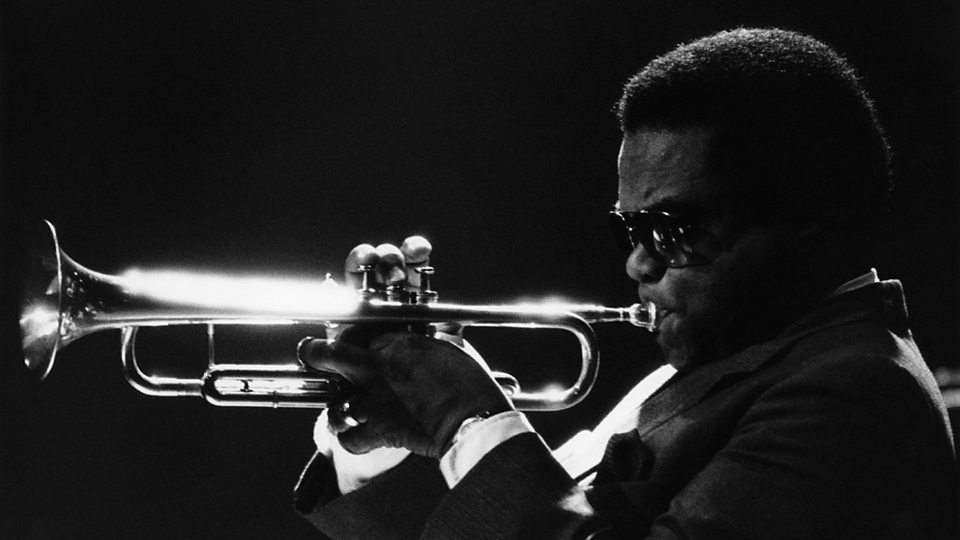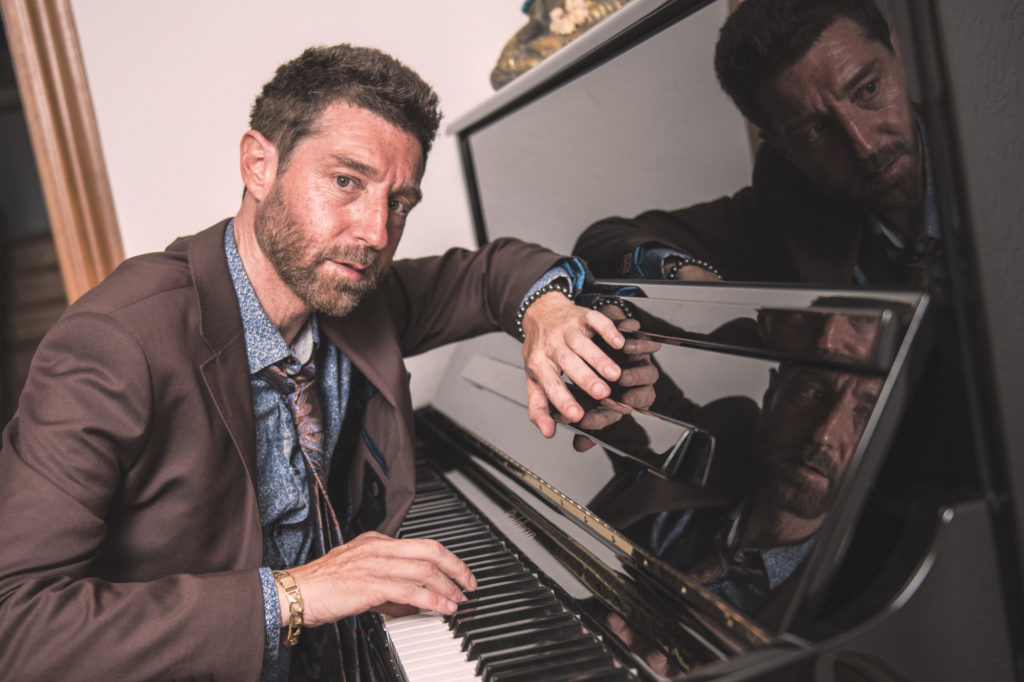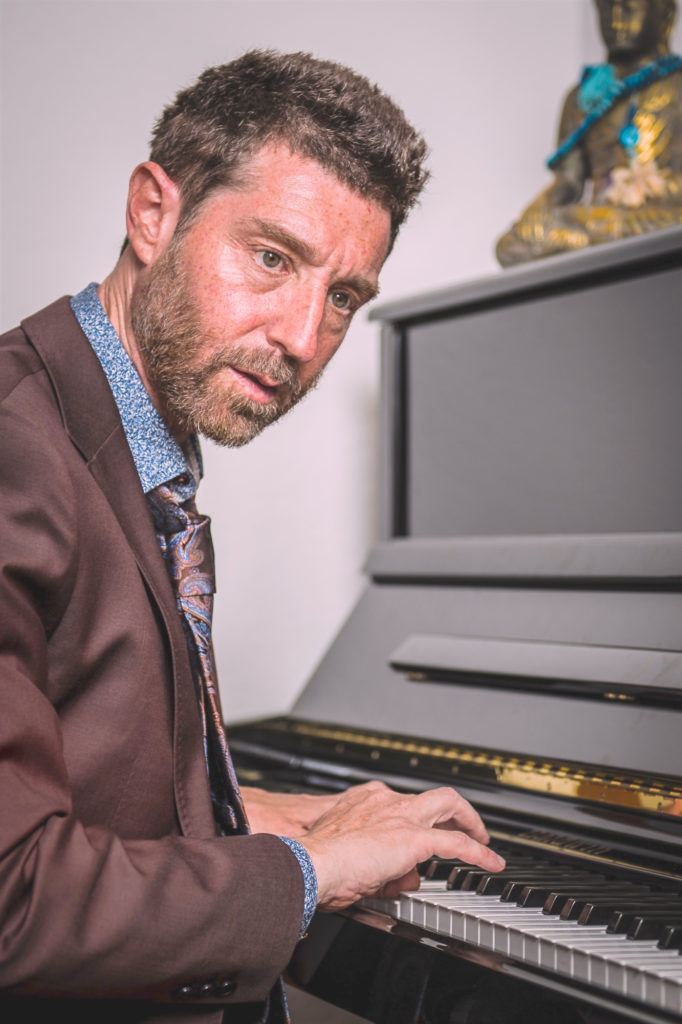By Benny Green
Freddie Hubbard was booked as a special guest with Art Blakey for a reunion with the Jazz Messengers in the Netherlands during the late fall of 1988. He was scheduled to sit-in with the band for a pair of concerts, followed by a scaled-down faction of the band recording a studio album with Art and Freddie the following week which was entitled FEEL THE WIND, at Max Bolleman’s legendary Studio 44 in Monster, Holland (the same studio where Kenny Barron had recorded his classic GREEN CHIMNEYS in 1983).
I’d gone over to the concert hall in the afternoon to practice, when Freddie, wearing dark sunglasses and a heavy overcoat, walked in and approached the stage to check his mic. Likely he’d asked to be driven straight to the hall upon his arrival at the airport for an abbreviated “line check” so that he could then go to the hotel and have an uninterrupted nap, allowing him to skip attending the band’s soundcheck which would directly precede the show.
Freddie took his flugelhorn out of its case and in turn, I respectfully paused my practicing. He began playing so pretty and gently, which was somewhat uncharacteristic of the way Freddie would traditionally first put his horn to his mouth. As all musicians who’ve ever worked with Hub know, it was most often the case that he’d pull his trumpet out of the case and hit some high notes right away, rarely warming up but generally just putting the cold metal to his lips and immediately going for broke. But somehow that wasn’t at all what he was doing on this occasion, which became my first chance to play with him.

I’d first met Freddie at the Blue Note in NYC around 1984, during a double-bill of his quintet with Betty Carter and her trio. We used to play a trio arrangement of Herbie Hancock’s “One Finger Snap” while I was in Betty’s band; a piece which debuted on Herbie’s 1964 Blue Note album EMPYREAN ISLES that featured Freddie along with Miles Davis’ rhythm section of the time, Herbie, Ron Carter, and Tony Williams. For some strange reason, the original l.p. liner notes for that album list Freddie as playing the cornet rather than a trumpet, but I’ve discussed this anomaly with many trumpet players, and the consensus among all is that it is indeed a trumpet (to say the least!) which Freddie’s playing on that record.
One evening during the week of that double-bill, Freddie and I passed each other on the stairway to the dressing rooms upstairs, and he stopped me. Unsolicited, he had a very warm and inviting manner of speech. If he was speaking quietly in a somber tone, his voice was lower, like it was coming more from his diaphragm, but if he was being jovial and purposely approachable in wanting to put you at ease and connect as he was on this occasion, his voice was just a little more high-pitched than one might imagine, given his heavy frame.
“You sound good, I heard you playing that ‘One Finger Snap’. You know that the melody you’re playing after the first four bars was mine, right? Herbie wrote out the first four bars of the melody and after that, he just had the chords on my part and told me to play my own melody. What you’re playing is what I played on the record, but I just came up with it that one time. Now they have it written that way in the fake-books, hahaha!”
A few years following that conversation, in 1987 the alternate take of “One Finger Snap” was released in the CD reissue of EMPYREAN ISLES, directly illuminating what Freddie had told me, as Freddie plays something fresh for the fifth through the fourteenth bars of the tune’s twenty-bar form each time through the head during the two versions. It just so happened that what Freddie played on the first chorus of the master take which was released on the original album was so melodic that it became iconically linked with the piece for all time. Like Kenny Drew‘s break on “Moment’s Notice” from John Coltrane‘s BLUE TRAIN – spontaneously invented in-the-moment, and here to stay for all time.
Betty Carter once told me “I hate alternate takes.” We had a discussion about it but I knew my place and while I wanted to speak my piece and defend my position, I also knew not to poke the bear. I’d told her that I dig them as a student of the music because we can learn all sorts of things from them through comparisons with the master takes. Betty grew up around the music, and the generation of Kenny Washington and people younger than he like myself were indeed a tribe of “record nerds”, and Betty didn’t particularly like that aspect about us. It was a real point of contention with her, how we’d study the records because it was a radically different approach to learning than she’d come up with, too clinical to one who knew a life of having been around Bird, Miles, Sonny Rollins, and all the cats as she had been.
The stories are legion of how Kenny would scour used record stores for rare and out-of-print l.p.’s during his tenure as a teenager in Betty’s band, and how she’d kind of “police” him not to go overboard with records, and how Kenny would accumulate so much vinyl on the road that he’d be forced to ask the other band members to help by packing some of his new acquisitions in their luggage.
By the time that we were coming up, the mid-1970s and 1980s, it was becoming more difficult to hear live rhythm sections playing in the ways they had in the 1950s, and for some of us, notably Kenny Washington and people like me who’d successively followed him and were a part of that sort of rogue-Rennaissance straight-ahead “hard bop” fraternity, the records are like our bibles. That never really sat right with Betty, but at the same time, we had to be keenly aware of just what it was that we were seeking from the Blue Note, Prestige and Riverside records as information, and with genuine respect for Betty, we felt that we still needed to maintain to do whatever it took to get inside of the musical vocabulary and language.
I also discussed the controversy of alternate takes being released as bonus tracks in CD reissues of classic albums with the late, great engineer Rudy Van Gelder. Like Betty, Rudy was opposed to alternate takes being heard. He told me that not only were the musicians still getting their bearings with the repertoire in many of those instances, but that for he as well, he might have still been scoping out the “choreography” of the solo sequence (which instruments played their solos at which point in the arrangement), and how the individual players were negotiating their proximities to the microphone, etc..
I defended to Rudy as I had to Betty, that for us younger generations who came up after what I consider to be the zenith years of small-group straight-ahead acoustic “bebop”, “hard bop” and “post-bop” as epitomized by trumpet-saxophone quintets from say from around 1945 with Bird and Dizzy recording “Shaw Nuff” and Bird and Miles recording “Billie’s Bounce”, through 1968 and Miles Davis’s SORCERER and NEFERTITI albums, we want to soak up all of the essential info from those records that we can. So for us, alternate takes are a kind of an invaluable portal offering additional insight.

One perfect small-group recorded organized jam session from that whole “classic” era, Cannonball Adderley’s 1958 Blue Note album SOMETHIN’ ELSE with Miles, Hank Jones, Sam Jones and Art Blakey on Blue Note, has a version of “Autumn Leaves” with an extended, dreamy ending exposition that Hank Jones purportedly has said was the best thing he ever recorded. The very beginning of the track exemplifies something so uniquely courageous about Miles, exhibiting one of the indigenous personality traits which make him such an especially deep communicator.
The opening rhythm section vamp and horn fanfare are borrowed directly from Ahmad Jamal’s arrangement of the song. Right at the top of the track, Miles blatantly cracks a note, and this is true “ugly beauty”. Today, almost anyone would either stop the take at that point, or else maybe “punch in” a cleaner attack, or fix it digitally with software like Melodyne after the fact. But Miles keeps that cracked note in there, and as listeners, regardless whether we may happen to be musicians or savvy aficionados but for any human listening, one instantly senses that Miles is being RAW and honest and purely in-the-moment, and on a base animal level, deeper than on merely an intellectual level, Miles’ realness draws us in and disarms our critical mind to receive the expressional voice of his emotions.
A couple of years ago, the first take of “Autumn Leaves”, an alternate, was released. It’s the same players, the same basic arrangement recorded at the same session mere minutes prior to the dark and mysteriously broody master take. Perplexingly, it somehow seems to be devoid of all of that magic synchronicity of what’s there in the master take. What changes did they make after the first attempt? What was discussed and what individual adjustments were made? These questions draw a student of the records inward and give us pause to consider what musicality is all about. There’s no “answer sheet” to turn to for a definitive conclusion to be drawn, and it makes one really THINK.
Rudy countered me – “so these takes that you’re discarding from this session we’re doing, how would you feel about people hearing these thirty years from now?” – and he got me with that one. I had to shudder to think of my alternate takes being heard. Horace Silver apparently had the brilliant foresight to personally obtain all of the physical tapes from his Blue Note sessions of false starts and initial takes which weren’t selected for album release at the time, and to actually destroy those tapes – we’ll never hear any “alternate takes” of Horace Silver’s classic Blue Note quintet sessions, we’ll only remember those records by the pristine versions of his arrangements that he chose at the time.
So at this afternoon line-check of Freddie’s, his flugelhorn sounded so beautiful that I simply couldn’t resist putting some harmonic “pads” underneath him, and I began playing some soft chords with his flugelhorn. And just like that, we were playing a spontaneously improvised duet. Somehow, as intimidated as I was and am by some grandmasters, there’s something about Freddie which always felt innately natural for me to play with.
Following that tour and recording session, whenever I saw Freddie he’d sound me about playing with him, and less than two years later I joined his band and it was time to “Take It To The Ozone“!
– – –
Freddie Hubbard – trumpet, flugelhorn Don Braden – tenor & soprano sax Benny Green – piano Jeff Chambers – bass Louis Hayes – drums
ARTIST CONTRIBUTOR

Benny Green possesses the history of jazz at his fingertips. Combine mastery of keyboard technique with decades of real-world experience playing with no one less than the most celebrated artists of the last half-century, and it’s no wonder Green has been hailed as perhaps the most exciting hard-swinging, hard-bop pianist to ever emerge from Art Blakey’s Jazz Messengers. Learn more at BennyGreenMusic.com.
